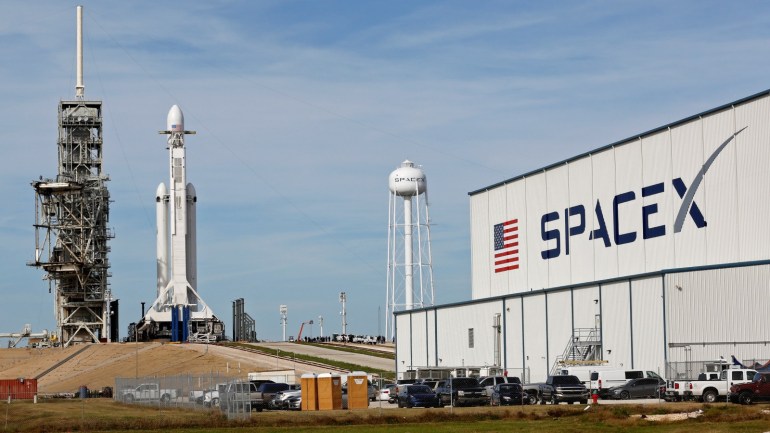Solar storms emit spectacular displays of light, such as the aurora borealis streaming across the skies, also known as false dawns, but they can also cause a kind of unexpected crisis.
This phenomenon does not pose any kind of danger to the planet in itself, but it may cause harm to humans who increasingly depend for their lives on advanced technology tools.
During a solar storm or turbulence in the sun, high-energy particles and a massive cloud of plasma can be blasted outward through the heliosphere toward planets, disrupting and disrupting large-scale infrastructure on and around Earth.
The space company, SpaceX, was greatly affected recently by the painful repercussions of such space weather, when a solar storm damaged 40 of its satellites.
Solar storms are mostly caused by massive explosions of plasma, and solar flares emanating from the active regions of the sun, and it is likely that we will witness more of these storms in the coming years, and it is known that the sun has a cycle of about 11 years, and it is noted that its activities are increasing once Others since 2019, and forecasts indicate that this activity will peak between 2024 and 2026.
There is a possibility that violent particles and explosions of radiation during the high activity phase of solar storms will have severe consequences for the planet, given our increasing dependence on technology tools.
The space company, SpaceX, was recently affected by the painful repercussions of such space weather, when a solar storm damaged 40 of its satellites (Reuters)
Solar storms emit high-energy particles and billions of tons of plasma to be launched into space, and they can head at a rocket speed towards Earth, covering a distance of about 150 million kilometers.
Despite the protection afforded by the Earth's magnetic field and atmosphere, these storms can cause severe damage, destroy satellites and power grids, and cause communications and navigation systems to collapse.
"A very intense solar storm can occur at any time, and it can have far-reaching consequences," says Melanie Hill, space weather mission coordinator for the European Space Agency in Germany.
Space travelers use the mission site's satellite control center to monitor solar storm activities, while Hill says it's not "highly likely" that all satellites will be down, only some of them can be affected.
The precautionary measures that we need to implement on the ground are to obtain a timely warning to protect the electricity networks, and reducing the capacities of generators and transformers may protect them from damage, however, it may be unpredictable for a very severe storm, and Hill says that “the latest Calculations indicate that we can expect about a 10% chance of extreme space weather occurring over the next 10 years."
Hill explains that any time these storms are warned will likely be insufficiently short, because solar particles are blasting across the vast area of the solar system at an unimaginable speed, and she says, "If we can't observe such a development, we will be vulnerable in the next few days." Anytime,” some monitoring points already provide data, but work is still underway to expand capabilities for more accurate forecasting.
Scientists hope that the European Space Agency's "Vigel" probe will allow them to get a better look at solar storms. Due to its position in space, the Vigil probe is scheduled to launch in 2027, while Hill says that unlike before, the probe is able to look sideways at the sun and track its storms.
The European Space Agency was surprised by the damage to billionaire Elon Musk's "SpaceX" company, and Hill says, "It wasn't actually a very strong solar storm, which is why no official warning was issued."
She adds that the SpaceX satellites were in the wrong place at the wrong time, and when the storm hit the atmosphere compressed so strongly that these satellites could not reach the point they were targeting, at an altitude of 300 kilometers and burned up in the atmosphere.
SpaceX wants to use the satellites to set up its own "Starlink" system, which aims to provide a high-speed Internet.
NASA says private space company SpaceX is doing a good job with Starlink, and both NASA and the US Meteorological Agency are currently working with SpaceX to improve Starlink operations.
NASA is also working on a better understanding of weather developments in space, as everyone wonders how dangerous the current solar cycle is.
This question does not have a definitive answer yet.

